"Day 29"
- Penny Colman
- May 8, 2023
- 3 min read
On day 29 of our 30-day cross-country road trip in 1995, we spent the night in Clarksville, West Virginia, having driven about 500 miles from Evansville, Indiana. We had stopped in Evansville to visit another women's history landmark—a woman soldier represented in the Desert Storm Veterans Memorial. I like tunnels and I remember happily driving on Route 70 through the Wheeling Tunnel to Wheeling, West Virginia. The next day we drove to Grafton, the hometown of Anna Jarvis, the founder of Mother's Day and the location of the International Mother's Day Shrine at Andrews Methodist Episcopal Church. The first two images are a weathered sign and a close up of a statue, the "Mother with Children" by William Douglas Hope. Checking the Internet, I see that now there is a spiffy sign, perhaps a nod to increased attention to sites related to women and a bid for tourists.
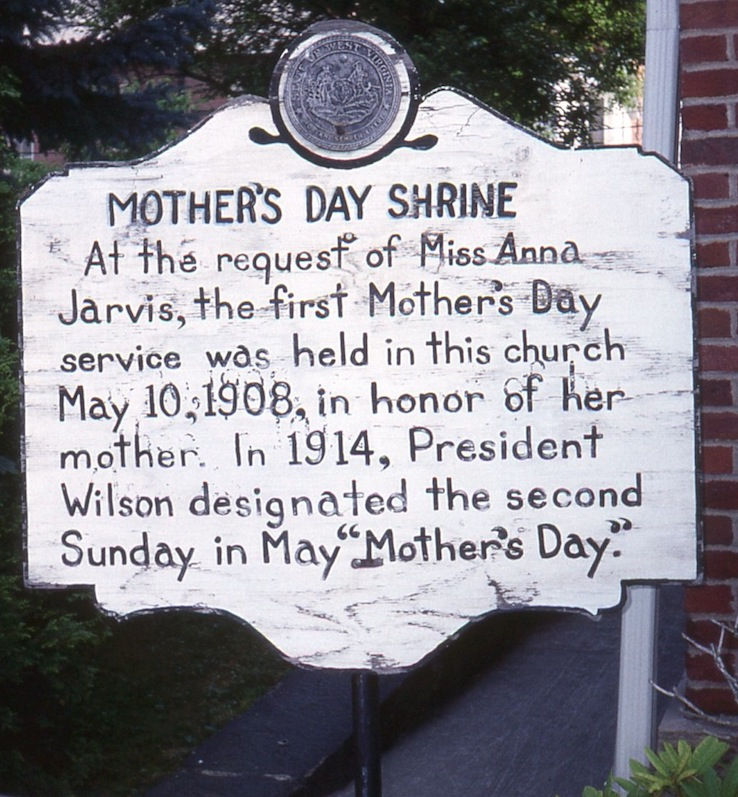

Anna Marie Jarvis established the holiday in honor of her mother Ann Reeves Jarvis (Left image). An activist and community organizer, Ann Reeves Jarvis founded Mothers' Day Work Clubs to assist mothers and improve health and safety conditions. (She had between eleven and thirteen children, only four survived to adulthood!) As the story goes, in 1879, during a Sunday school class that Ann Reeves Jarvis was teaching, she prayed: "I hope and pray that someone, sometime, will found a memorial mother's day commemorating her for the matchless service she renders to humanity in every field of life. She is entitled to it." Fifteen-year-old Anna, a student in her mother's Sunday school class, never forgot her mother's fervent prayer.
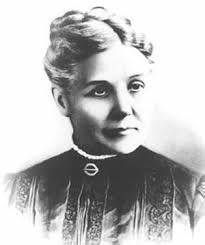
Prior to Ann's prayer, in 1870, Julia Ward Howe, best known as the author of the "Battle Hymn of the Republic," had proposed a "Mothers' Peace Day" as a "protest against war throughout the world." Howe's "Mothers' Day" was first celebrated on June 3, 1873. (The placement of the apostrophe is significant: Howe used the plural form, i.e., mothers'. Ann and Anna Jarvis used the singular, i.e., mother's.)
Ann Reeves Jarvis died in 1905. In 1907, her daughter Anna organized a small Mother's Day celebration at the Andrews Methodist Episcopal Church. The next year on May 10, the second Sunday in May, in 1908, the first formal Mother's Day celebration was held at the church. Anna, who was giving a speech at a much larger celebration in Philadelphia, sent a telegram and 500 white carnations to the church. She launched a campaign to make Mother's Day a national holiday. Celebrations multiplied and white carnations became all the rage. Left image: The Philadelphia Inquirer, March 6, 1908, p. 20. Right image: Fort Worth Star-Telegram, May 9, 1908, p. 1.
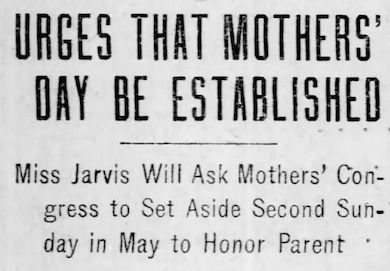
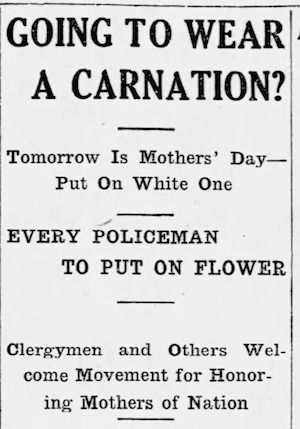
In 1914, President Woodrow Wilson made Mother's Day an official national holiday. Sensing a golden opportunity, the card, candy and florist industries started cashing in on Mother's Day. Jarvis was apoplectic! (Left image) She launched a decades long fierce
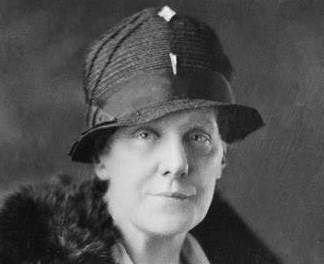
battle against the commercialization of Mother's Day, even taking on First Lady Eleanor Roosevelt for using Mother's Day to raise funds for a charity. Increasingly agitated and unstrung, Anna Jarvis was placed in the Marshall Square Sanitarium, a mental asylum near Philadelphia where she had had a successful career as the first female literary and advertising editor for an insurance company. A historic marker for Mother’s Day (left image) is located in Philadelphia across the street from Wanamaker's Deparment Store. Its founder, John Wanamaker, was a supporter of Mother’s Day. (The Pennsylvania Historical and Museum Commission erected the marker in 1998. I raised an eyebrow when I read the text that seems to imply that "rising feminist activism" was a threat to "motherhood & family life.")
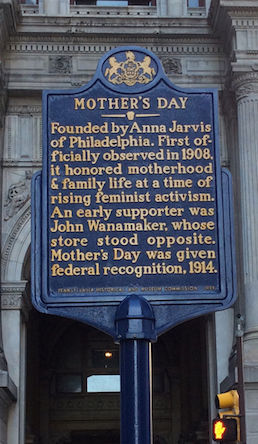
Anna Marie Jarvis died in the sanitarium on November 24, 1948. Her funeral was private and she was buried next to her mother. Her death and bitter disappointment were widely reported, as you can see
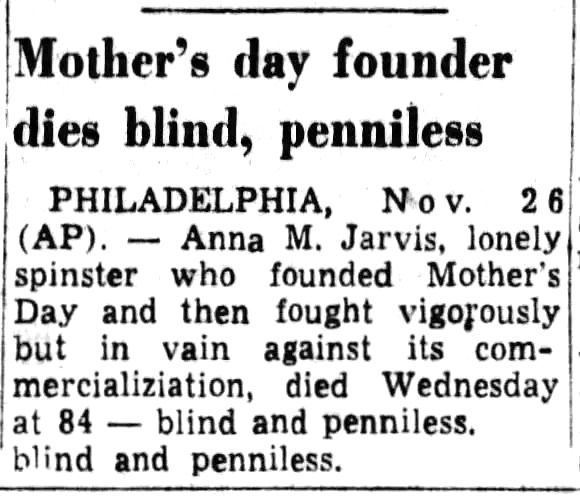
in this selection of obituaries.*
On a personal note, Linda and I honor Mothers' Day, i.e., mothers'—the homemade kind with handmade cards and meaningful messages, deeds, and gestures that honor everyone who takes on the awesome responsibilities, tasks, and delights of mothering! We made one more women's-history-stop in West Virginia that I'll write about later. Then we drove more than 500 miles home: Driving feats of our younger years!
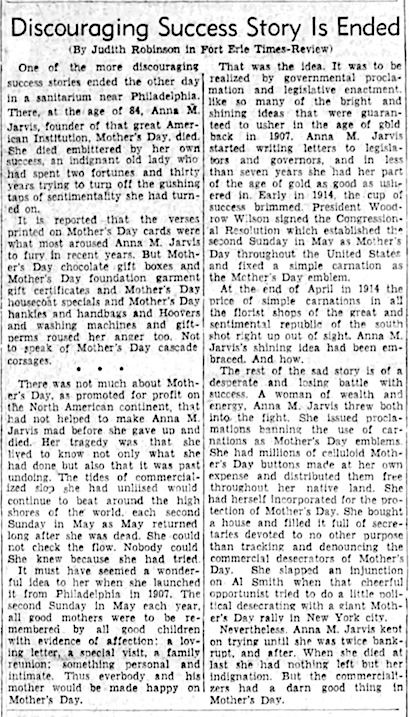
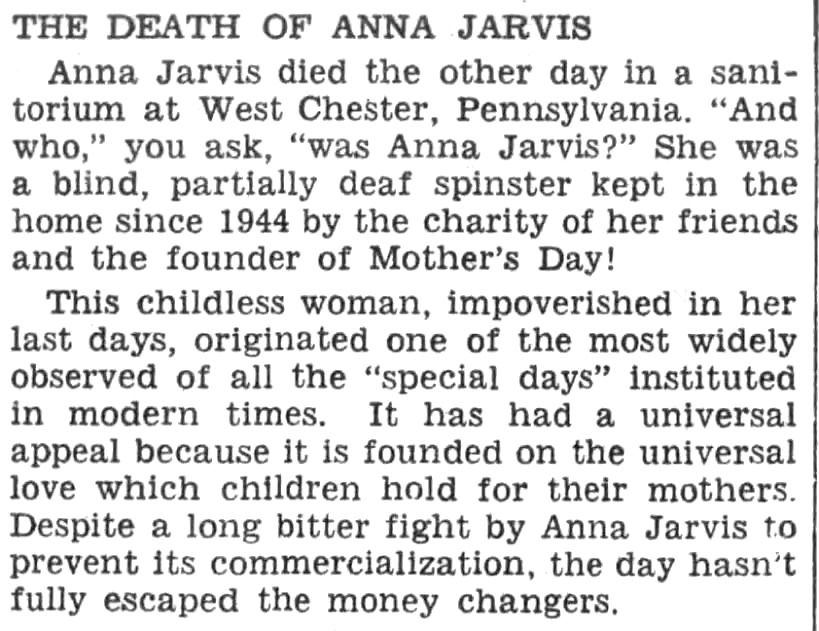
*Top image: The Leader-Post, (Regina, Canada), Nov. 26, 1948, p. 24. Left image: The Sun TImes, (Owen Sound, Ontario, Canada), Dec. 16, 1948, p. 4. Right image: The Enid Daily Eagle (Enid, Oklahoma), Dec. 2, 1948, p. 16.



Comments